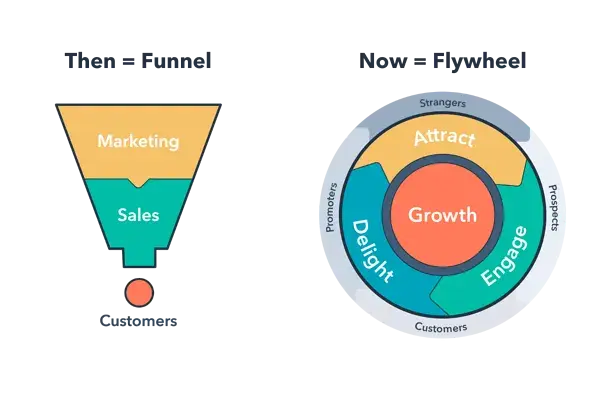The Art and Strategy of Customer Acquisition: A Guide for Sustainable Growth

In the highly competitive world of business, customer acquisition is not just a marketing buzzword — it’s the lifeline of any company. Whether you’re a budding startup or a well-established brand, acquiring new customers consistently is essential for revenue growth, brand awareness, and long-term success.
But customer acquisition isn’t as simple as throwing money at ads and hoping for conversions. It’s a well-planned strategy that combines data, creativity, and customer psychology. In this blog, we’ll explore what customer acquisition is, why it matters, and how to develop an effective acquisition strategy that delivers lasting value.
What Is Customer Acquisition?
Customer acquisition refers to the process of attracting and converting prospects into paying customers. It involves all steps from raising awareness to guiding leads through your sales funnel and closing the deal.
Unlike customer retention, which focuses on keeping existing customers, acquisition is about bringing new people into your ecosystem. It’s often measured by Customer Acquisition Cost (CAC) — the amount you spend to gain a single new customer.
Why Is Customer Acquisition So Important?
- Business Growth: Without new customers, revenue stagnates. Consistent acquisition is essential for scaling.
- Market Expansion: It allows you to tap into new demographics, regions, or niches.
- Brand Awareness: The process of acquiring customers boosts your brand’s visibility.
- Investor Confidence: A steady inflow of customers indicates business viability and attracts investors.
Key Components of a Customer Acquisition Strategy
Crafting a successful acquisition strategy involves multiple channels and touchpoints. Here’s a breakdown of the core elements:
1. Define Your Target Audience
The first step is understanding who your ideal customer is. Create detailed buyer personas that include:
- Demographics (age, gender, location)
- Interests and behaviors
- Pain points
- Buying habits
A well-defined audience allows you to tailor messaging and campaigns that resonate deeply.
2. Build a Compelling Value Proposition
Your product or service must solve a real problem. Clearly communicate the unique value you offer. Why should a customer choose you over competitors? A strong value proposition builds trust and interest.
3. Choose the Right Acquisition Channels
Different channels serve different purposes. The best strategy is often a mix of paid and organic methods:
- SEO and Content Marketing: Attract traffic through blogs, how-to guides, and product pages.
- Social Media Marketing: Use platforms like Instagram, LinkedIn, or Facebook to engage with potential customers.
- Email Campaigns: Build relationships through lead nurturing and follow-up.
- Referral Programs: Leverage existing customers to bring in new ones.
- Paid Ads (PPC, Social Ads): Gain immediate visibility with targeted ad campaigns.
4. Optimize Landing Pages and Funnels
Once people click on your ad or link, your landing page must seal the deal. It should be:
- Clear and distraction-free
- Focused on one action (sign up, buy now, download, etc.)
- Equipped with testimonials, visuals, and trust badges
A well-designed funnel ensures that prospects move smoothly from awareness to conversion.
5. Leverage Data and Analytics
Use tools like Google Analytics, Meta Pixel, or CRM dashboards to:
- Monitor campaign performance
- Identify which channels convert best
- Track Customer Acquisition Cost (CAC) and Lifetime Value (LTV)
Data-driven insights help you scale what works and cut what doesn’t.
Low-Cost Customer Acquisition Techniques
If you’re working with a limited budget, here are a few smart ways to acquire customers without breaking the bank:
- Content Partnerships: Collaborate with influencers or bloggers in your niche.
- Free Trials or Freemium Models: Let people try before they buy.
- Community Building: Create a loyal following through Facebook groups, forums, or webinars.
- User-Generated Content: Encourage customers to share experiences and tag your brand.
Customer Acquisition vs. Customer Retention
While acquisition is vital, don’t forget the importance of retention. In fact, retaining existing customers is often cheaper and more profitable in the long run.
However, acquisition and retention go hand-in-hand. A new customer today could become a loyal advocate tomorrow — if nurtured properly.
Common Mistakes in Customer Acquisition
- Ignoring the Funnel: Driving traffic without a follow-up strategy wastes resources.
- Overlooking Mobile Optimization: Many users interact with your brand on mobile first.
- One-size-fits-all Messaging: Customization is key. Segment and personalize.
- Focusing Only on Paid Ads: Organic growth builds authority and trust over time.
Avoiding these mistakes can significantly improve your ROI and brand reputation.
Final Thoughts
Customer acquisition is not a one-time event — it’s a continuous journey of connecting with people, solving their problems, and turning them into happy customers. The most successful businesses don’t just aim to sell; they aim to create value and build trust at every stage of the customer journey.
Whether you’re just starting out or scaling up, the right acquisition strategy will serve as your engine for sustainable growth. Focus on what matters: knowing your audience, delivering real value, and constantly optimizing your approach.


Comments
Post a Comment